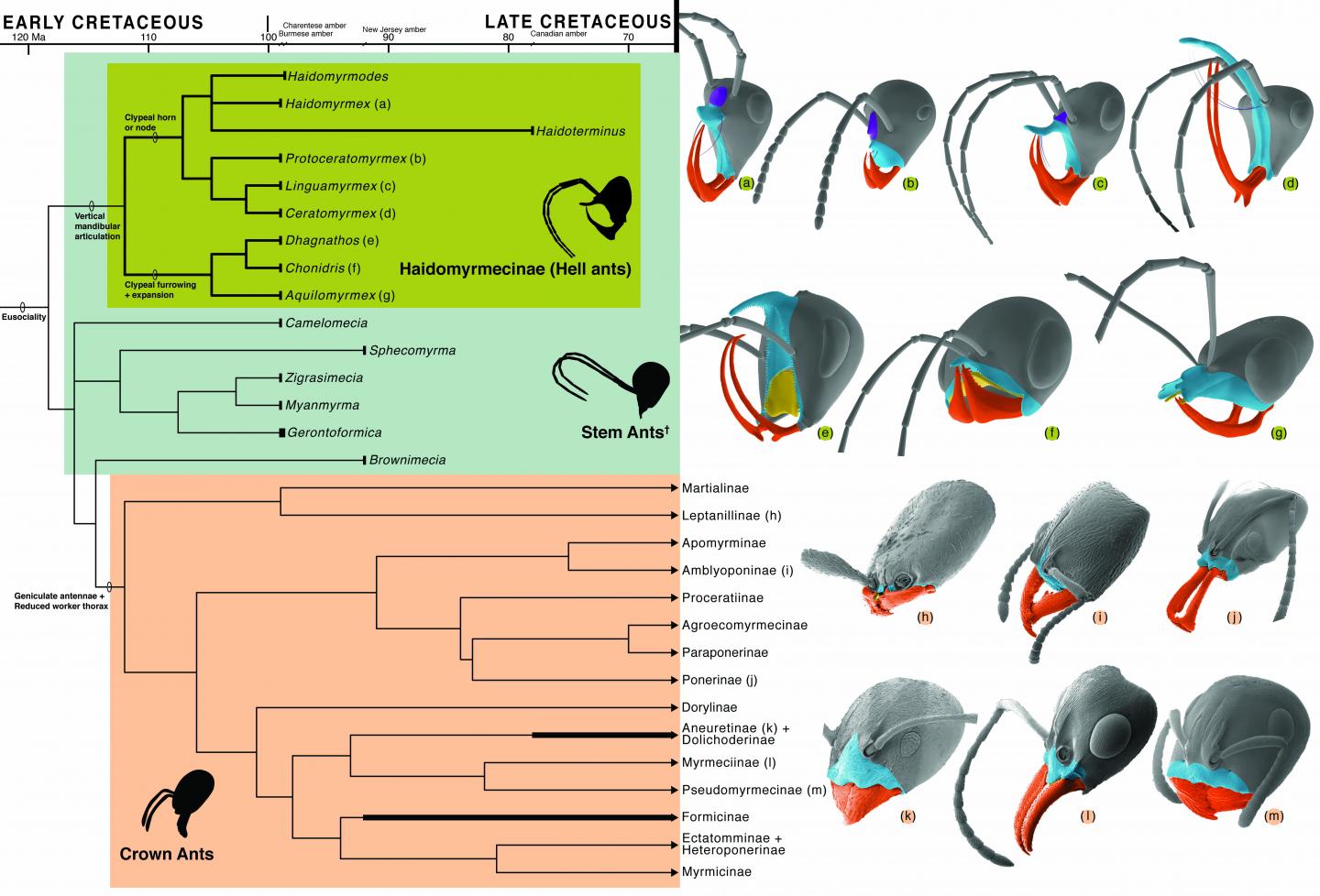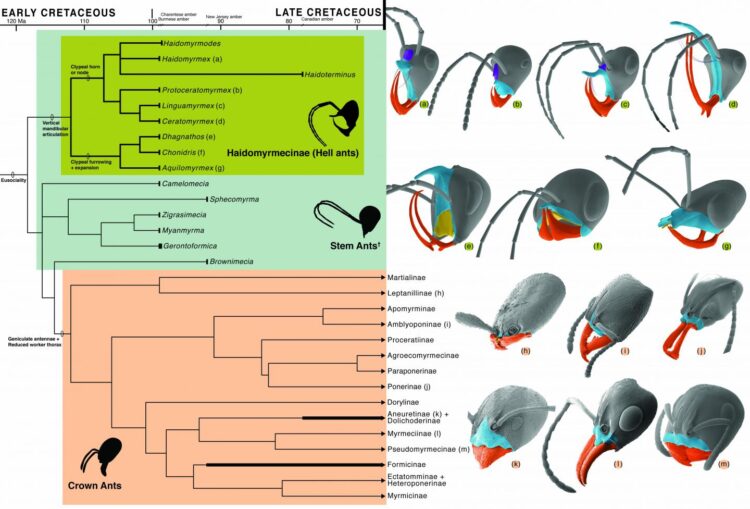
Credit: NIGPAS
Ants are the most successful social insects and play an important role in modern terrestrial ecosystems. The origin and early evolution of ants have attracted lots of attention.
Among the earliest fossil ants known, haidomyrmecine “hell ants” from Cretaceous amber reveal an ancient and dramatic early burst radiation of adaptive forms.
Hell ants possessed bizarre scythe-like mouthparts along with a striking array of horn-like cephalic projections. But how did this type of ant evolve? This question was long a mystery.
Now, however, an international research team co-led by Prof. WANG Bo from the Nanjing Institute of Geology and Palaeontology (NIGPAS) of the Chinese Academy of Sciences has confirmed the special trap-jaw predation mechanism of hell ants, providing new insights into their evolution.
The study was published in Current Biology on August 6.
The research team conducted morphological and anatomical analysis of the heads of all hell ants in the amber specimens, in combination with a special predator specimen, and confirmed the “trap-jaw” predation mechanism adopted by hell ants from their morphological and functional aspects.
The scientists reported an instance of fossilized predation that provides direct evidence for the function of dorsoventrally expanded mandibles and elaborate horns.
Their findings confirmed the hypothesis that hell ants captured other arthropods between mandible and horn in a manner that could only be achieved by articulating their mouthparts in an axial plane perpendicular to that of modern ants.
The head capsule and mandibles of hell ants are uniquely integrated as a consequence of this predatory mode and covary across species, while no evidence has been found of such modular integration in extant ant groups.
The results of this study suggest an extinct early burst adaptive radiation into morphospace that was unoccupied by any living taxon. This radiation was triggered by an innovation in mouthpart movement and subsequent modular covariation between mandible and horn.
The new results also suggest that hell ant cephalic integration – analogous to the vertebrate skull – triggered a pathway for an ancient adaptive radiation and expansion into morphospace unoccupied by any living taxon.
###
Media Contact
LIU Yun
[email protected]
Related Journal Article
http://dx.





